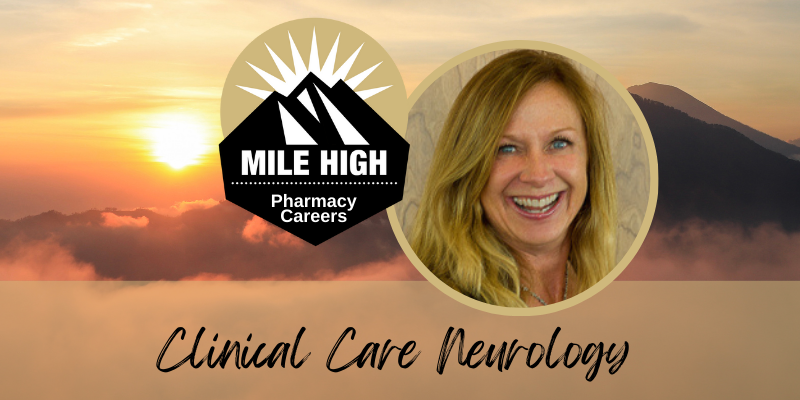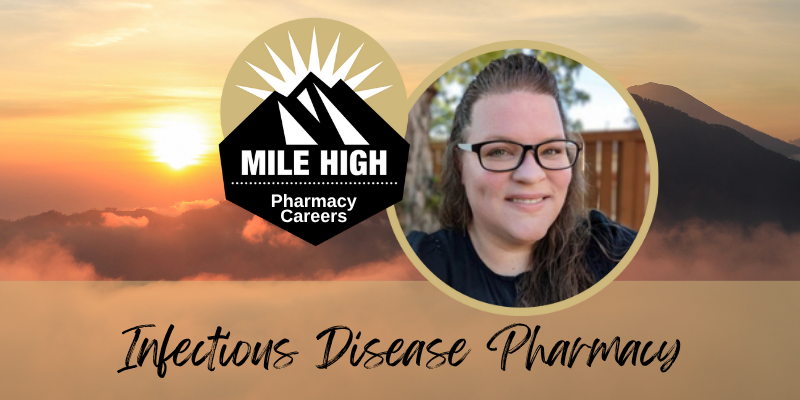CU Skaggs School of Pharmacy Professor Rob Valuck was invited to testify today before the Senate Committee on Health, Education, Labor, and Pensions about Colorado's efforts to stem the opioid epidemic. Read his testimony below.
Letter/Transcript from Dr. Rob Valuck's Dec. 8, 2015, testimony to the U.S. Senate HELP (Health, Education, Labor and Pensions) Committee:
Thank you Chairman Alexander, Ranking Member Murray, and members of the Committee for the opportunity to provide testimony to you today about our efforts to address the opioid epidemic in Colorado. In 2012 (based on 2010-11 data), we had the troubling distinction of ranking 2nd nationally for self-reported, non-medical use of prescription drugs: more than 255,000 Coloradans misused prescription medications, and consequent deaths related to misuse nearly quadrupled between 2000 and 2011. As the Committee is well aware, these dramatic increases in the misuse and abuse of prescription drugs have been felt nationwide. The expenses associated with prescription drug misuse are significant, and include costs attributed to lost productivity, criminal justice proceedings, treatment, and medical complications.
Since 2012, catalyzed by the Governor Hickenlooper’s leadership as a Co-Chair of the National Governor’s Association Policy Academy for Reducing Prescription Drug Abuse, we are currently implementing a unique, innovative, and coordinated approach to confront this public health crisis. Drawing upon stakeholder input, national best practices and the success stories from other states, we have engaged and leveraged expertise of the healthcare community, educators, state and local law enforcement, public health, human services, community groups, and our legislative partners. In 2012, we set a goal of preventing 92,000 Coloradans from engaging in non-medical use of prescription pain medications by 2016 through the adoption of the Colorado Plan to Reduce Prescription Drug Abuse. This commitment represents reduction from 6% to 3.5% of Coloradans who self-report non medical use of prescription drugs. Our plan is a coordinated, statewide strategy that simultaneously restricts access to prescription drugs for illicit use, while ensuring access for those who legitimately need them. The Colorado Plan to Reduce Prescription Drug Abuse currently focuses on 8 key areas:
- improving surveillance of prescription drug misuse data;
- strengthening the Colorado Prescription Drug Monitoring Program;
- educating prescribers and providers;
- increasing safe disposal to prevent diversion and protect the environment;
- increasing public awareness;
- enhancing access and referral to evidence-based, effective treatment;
- expanding access to the overdose reversal drug Naloxone; and
- increasing the voice of those who are affected by the epidemic.
To implement the Colorado Plan and monitor and coordinate progress, state level leadership created the Colorado Consortium for Prescription Drug Abuse Prevention (the Consortium). The Consortium provides a statewide, inter-agency/inter-organization framework designed to facilitate collaboration and implementation of the strategic plan by interested parties and agencies, and is comprised of 8 work groups, separated by the focus areas outlined above. The Consortium is housed at the University of Colorado (CU) Skaggs School of Pharmacy and Pharmaceutical Sciences at Anschutz Medical Campus (which houses the School of Pharmacy, the Colorado School of Public Health, Colorado State University, the University of Northern Colorado, the CU School of Medicine, and the CU College of Nursing). The Consortium, a 501c3 organization that is not housed in any one state agency but includes them all, provides an independent statewide network designed not only to implement the strategic plan, but to survive beyond its short time window to continue to address this epidemic over the long period of time that will be required to solve it. The education, governmental, and medical communities are well positioned to address many of Colorado’s prescription drug abuse challenges, and the partnerships facilitated by the Consortium have been crucial in attaining optimum outcomes and increased federal funding.
Utilizing this innovative, coordinated, multidisciplinary approach, Colorado has experienced a wide variety of successes and positive developments in each of its areas of focus. These successes have come in the form of legislation, collaboration, increased public awareness, community and affected family engagement, the creation of a statewide safe disposal program, and unprecedented interagency and professional association cooperation. Colorado’s efforts have received strong bipartisan support from various key agencies, offices, and related task forces in the state. Our former Attorney General, Jon Suthers, contributed $1 Million to the work of the Consortium, primarily to launch the TakeMedsSeriously public awareness campaign. And the Consortium has been named an official subcommittee of the legislatively mandated Substance Abuse Trend and Response Task Force, which addresses substance abuse more broadly, but now benefits from the collective expertise of the Consortium.
Further innovations in Colorado include our Department of Human Services, Office of Behavioral Health, including the Consortium in its next five-year Substance Abuse Block Grant funding cycle, to serve as a coordinating hub for statewide prevention efforts aimed primarily at youth and young adults. Rise Above Colorado, the recipient of the statewide prevention grant for 2015-2020, is working to help extend the reach of the Consortium, the key messages it has developed, and bring them to these key target populations, where the problem of prescription drug misuse and abuse most often starts.
Finally, the Consortium has begun to be recognized as a national model for developing a state level, collaborative, coordinated, collective action approach to addressing this serious public health problem. Through the creation of a common agenda, shared measurement, mutually reinforcing activities, continuous communication, and a novel backbone infrastructure, we have worked to create a lean but effective vehicle for a collective approach to addressing prescription drug abuse in Colorado.
But despite encouraging trends, more needs to be done, and we continue to study the problem, engage and listen to all constituents to gather their ideas and input, scan the nation for best practices, policies, and programs, and incorporate them into our own efforts. While we have made significant progress in Colorado, there is a clear place for Federal assistance in fighting this troubling epidemic. The current work by all federal agencies and offices, from HHS (SAMHSA, CDC, FDA, HRSA, CMS), to DOJ, DEA, ONDCP, and OIT, among others has represented a very good start from a variety of perspectives, but we believe there are three specific ways in which you could help states address the opioid epidemic:
First, federal funding and agency support should be directed to the creation and support of state and regional level collaboratives, similar to the Consortium model we have created in Colorado, but with room for tailoring to the needs of individual states and regions of the country. We know that working together is challenging but possible, and that each state and region has its own unique needs. Federal support could go a long way to creating viable, effective models to attack this problem at the appropriate levels, using local expertise and resources, where we believe the most success will obtain.
Second, we believe that the DEA National Takeback Initiative, while extremely successful in each of its eleven iterations over the past six years, should be strengthened to better facilitate prescription drug take back and destruction. The new regulations allowing pharmacies, clinics, and other organizations to become “reverse distributors” are laudable but we are concerned that sufficient economic incentives for these organizations to get into the reverse distribution business are lacking. Further, we suggest that the federal government assist in the creation of a national, permanent takeback network, whereby citizens may drop off their unused medications at any time, 365 days a year, and thus stem the tide of misuse where it starts, in the medicine cabinet.
Third, we have seen and applaud the many efforts of government agencies and professional organizations to create continuing education programs for prescribers and other providers, and to create best practice guidelines for safe and effective opioid prescribing, dispensing, and use. What is needed now are tools for providers, to enable them to implement the educational content and best practices into their routine, daily work. Information technology, software systems, connectivity, and mobile apps offer clinicians and patients the opportunity to make prescribing, dispensing, and using opioids safer, more effective, and with the ability to track outcomes and learn what works best and what doesn’t. Funding for the development, testing, and implementation of clinical tools will help us move from “knowing what to do” to “knowing how to do it.”
With additional help in these three areas, states will have substantially more resources, brainpower, and tools to address the opioid epidemic in their states and regions. We hope you will consider these suggestions, and work to develop policies and programs to support them.
In closing, while there is still much work to do in response to this public health crisis, we are emboldened by some of the progress seen in Colorado. We have confidence that the Consortium model will allow us to implement a multi-faceted, strategic approach that is responsive to changing trends and data, and the continued development of national best-practice. The Colorado Plan to Reduce Prescription Drug Abuse is a crucial part of our commitment to making Colorado the healthiest state in the nation. Better health is not just good for individuals and families; it has positive outcomes for our workforce, reduces the costs of government, and improves the quality of life in our communities.
Thank you, again, for the opportunity to provide testimony today. We would be happy to answer any questions related to the work we are doing


.png)
